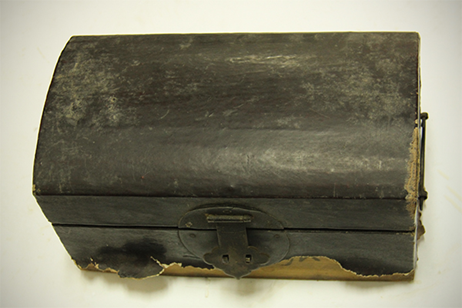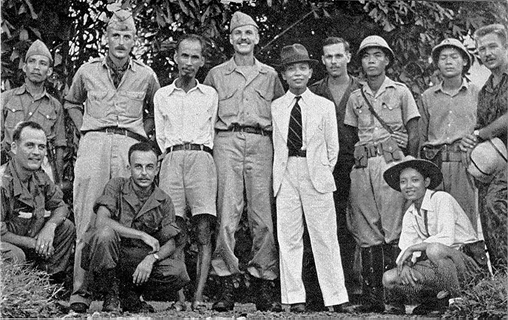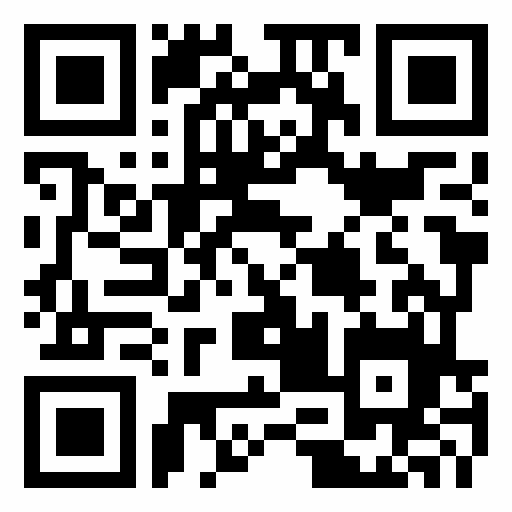The American Presence in Uncle Ho's Treatment In 1945
Van-Loc Vo 1*, Nga Thi Nguyet Dinh2, Lam Tung Le1, Vinh Phuc Pham1
|
|
|
ABSTRACT
Uncle Ho was afflicted by malaria in the days before the August Revolution of 1945. Uncle Ho's condition almost worsened because of "delirium" in the cool of the mountain, and the mounting pressure arose from the preparation of the August 1945 coup. However, his condition was controlled by General Vo Nguyen Giap and a group of healers. An American friend, Doctor Paul Hoagland, also treated and looked after Uncle Ho wholeheartedly, and it was not very long before he recovered fully. Attendees may not have documented Dr. Paul Hoagland, a remarkable guardian due to the importance of other historical events during this period.
Keywords: Paul Hoagland, Treatment, Uncle Ho.
Introduction
Throughout his career as a revolutionary, wherever he went, Ho Chi Minh (known as Uncle Ho) was always mindful of physical exercise and health-related matters. He understood that even for a fervently passionate patriot and revolutionary if one did not know how to stay healthy, chronic disease would eventually befall and prevent him from accomplishing his goals. Therefore, during his days, no matter where he traveled or what he did, he took the time to train his body by doing yoga or playing sports with his guards.
However, as a human being, he was not exempted from falling seriously ill now and then, especially given the clandestine living condition inside mountains and forests before the August Revolution in 1945. In the memoirs of General Vo Nguyen Giap, there was a paragraph that wrote: "I came in one day to find that Uncle was having a fever and kept on mumbling while in a coma. At that time, we were very short of medical supplies, only left with a few cold pills and some quinine. Uncle Ho took the pills but did not get any better. On every other day, unless he was sleeping, he would never lie down, but it was then that his delirium left him with no choice" [1]. As described by the late Vice President Nguyen Luong Bang: "A few days ago, the illness was critical, even seemingly fatal. Uncle Ho even summoned Mr. Pham Van Dong and Mr. Vo Nguyen Giap to the table as if to hand over the business with his very last words" [2]. Fortunately, thanks to the subsequent intensive treatment, he eventually recovered. Nevertheless, from our point of view, those who helped with the health treatment of Ho Chi Minh around July 1945, right before the August Revolution (based on the available documentation), merit further discussions.
Supporting Evidence and Discussion
The memoirs by General Vo Nguyen Giap written about this period recounted: "Uncle Ho went from being conscious to unconscious back and forth during that night. On the following day, I wrote a letter concerning his condition to the central authority. Besides, I also asked the local people for any available means of treatment and received feedback that a healer was specializing in fever nearby. I requested one of the men to fetch the said specialist by horse. Upon arriving, an elderly Tay healer took his pulse and forehead, and then fed Uncle Ho a freshly dug tuber in the forest, which was burned and later mixed with porridge. After eating the porridge for a few times, Uncle Ho regained consciousness, and his fever subsided. Gradually, Uncle Ho was able to get up and do daily tasks", [3]. Long afterward, upon hearing about the story of Ho Chi Minh's illness cured by the Tay healer, Professor Do Tat Loi, an expert on Vietnamese medicinal plants, studied and confirmed the plant that Ho Chi Minh was prescribed to be "Mã liên an", under the scientific name of Streptocaulon griffithii Hook.f [4]. Thus, according to the memoirs of General Vo Nguyen Giap and the research of Professor Do Tat Loi, the person who treated Uncle Ho at this time was an elderly Tay healer, and the cure was a traditional herbal medicine named "Mã liên an". The healer was known as the "elderly Tay healer" who lived near Uncle Ho's office. When Mr. Nguyen Luong Bang inquired about his condition, Uncle Ho said: "People here went to the forest and picked up herbal medicine for me. After a few days, I am all better now" [2, 5, 6].
In his article about Uncle Ho regarding Tan Trao, Mr. Chu Van Tan, former Minister of Defense in the Provisional Government of the Democratic Republic of Vietnam, said: "We once were at the battlefront on the third street, 36 kilometers into Chu market. Suddenly, an urgent letter from Comrade Van Bao arrived: Uncle Ho is tired; immediate search for a good herbalist must be carried out as soon as possible. Our hearts were stricken with anxiety. We knew about Mrs. Pao, a minority female herbalist, and so she was beseeched to come and cure Uncle" [2, 7, 8]. Later, the Saigon Giai Phong newspaper interviewed with Mr. Tran Van Nhan, son of Mrs. Pao. During the interview, Mr. Nhan said: "My mother's real name is Hoang Thi Lien, born in 1894 and is of San Chi ethnicity. [...] That day, Mr. Loc Van Tu came to our house and beseeched her to cure Uncle Ho, who at the time was seriously ill in Tan Trao. My mother immediately prepared the medicine and was soon on her way. For one whole month, she and the guards decocted oral and bath medications for Uncle Ho to fight off malaria. Before returning to Dinh Hoa, my mother had the honor of taking a photo with Uncle Ho and was gifted a horse for her work-related travel" [9]. Regarding the medicinal plant that was used to treat Uncle Ho's disease, the Saigon Giai Phong newspaper wrote: "The descendants of Mr. Ma Dinh Tap recounted that at that time, Mr. Tap was the General-in-Chief whose family had long been wealthy since the time of his ancestors. Out of all possessions of the Ma family in Ban Cai, there was an heirloom treasured above the rest, a box of Cao Ly ginseng. In the old days, the rich often stocked up on ginseng in case they fall seriously ill. One night, when the whole family was fast asleep, there was a knock on the door. Mr. and Mrs. Tap got up to unlatch the door and were asked by officials about selling their ginseng to the union for health-improvement purposes concerning a senior official. The two heads of the family searched for the key, unlocked the trunk, and took out the precious ginseng box. Inside the box was intact ginseng about 13 cm long and another that had been used up by half. Without hesitation, the family gave all the ginsengs to the elderly official, whom Mr. and Mrs. Tap figured to be very important" [9]. According to currently available documents, this ginseng box is numbered 7662-G-176. It is still on display at the Vietnam Military History Museum to pay tribute to and show appreciation for the individuals who helped Uncle Ho during his illness [10]. As such, according to these documents, the person who treated Ho Chi Minh was Mrs. Pao from Dinh Hoa district, Thai Nguyen province, and the medicine used was ginseng.

Figure 1. Box of ginseng, No. "7662-G-176 ", Vietnam Military History Museum
Also, according to Mr. Dang Quang Huy, an officer of the Collection - Inventory - Documentation Department of President Ho Chi Minh Relic Complex, when Uncle Ho fell ill in Tan Trao, General Vo Nguyen Giap also brought over a nurse to inject him with medication. That nurse was Mr. Nguyen Viet Cuong (whose real name is Nguyen Duc Kinh, born in 1925, in Khau Chu village, Dong Vien commune, Cho Don town, Bac Kan province). The story of Mr. Viet Cuong treating Uncle Ho was recounted in his own words by Mr. Dang Quang Huy: "In one afternoon, at about 12:30 P.M, Mr. Van told me [Mr. Viet Cuong] to bring medicine bags and accompany him to visit a patient. I was led by him to a shack where I saw Uncle Ho dressed in indigo clothes, lying in a coma and barely breathing. I noticed the anxious facial expressions of my comrade. I then felt Uncle Ho's forehead and his pulse, which was pounding frantically. Given the situation, I decided to seek clearance from Comrade Van for administering an injection. He agreed. I then proceeded to prepare injection devices, taking one tube of ether, two tubes of camphor oil since I knew that when these two drugs were injected together into someone with a fever, the resulting combination would cause the patient's body to heat up, stimulating activities in the circulatory system. I injected the drugs into his thigh. When I pulled out the needle, I noticed that Uncle Ho was numb. A moment later, I could sense the smell of camphor oil emanating from his breath. After two minutes, Uncle moved his limbs. Ten minutes later, Uncle Ho began to stir, and his body appeared to warm up. Shortly after, he fell asleep. Later, when Uncle Ho opened his eyes, seeing comrade Van nearby, he started instructing him on certain matters. The gist of comrade Van's response was that he understood, reassured Uncle Ho not to worry, and wished him a speedy recovery" [11]. Thus, in addition to the elderly Tay healer, General Vo Nguyen Giap also took a military nurse to treat Uncle Ho.
An article published by Tien Phong online newspaper in 2007 also discussed Uncle Ho's healers during this period. In April 2007, Minh Phuong reporters visited Mr. Henry Albert Prunier – an American veteran, a member of the Deer intelligence team, and his wife Maria Prunier to research the topic and consult them on writing a book. This book is concerned with the period when the Office of Strategic Services (OSS) Deer Team parachuted into Tan Trao during July 1945 to assist in training the Viet Minh soldiers to fight Japan at the behest of Uncle Ho. Within the book, there was one sentence referencing a time when Uncle Ho was sick: "All members of the Deer Team had certain duties to perform, and one of them was a doctor who had treated Uncle Ho when he was sick. Their weapons, medicine, and food were all supplied by helicopters" [12]. In May 1945, Lieutenant Dan Phelan parachuted into Tan Trao base camp and joined Viet Minh forces to prepare all work, including the construction of a small field runway to receive Allied aircraft. After that, on July 16, 1945, the Deer Team organized the first parachute jump to Kim Lung Village, within the Tan Trao war zone (Tuyen Quang Province). The team's leader, Major Allison Thomas, joined the first mission along with Sergeant William Zielski and Sergeant Henry Prunier. On July 30, 1945, the second parachute completed the whole Deer Team personnel, with Lieutenant Rene Defourneux, Sergeants Lawrence Vogt and Aaron Squires, and Paul Hoagland [13]. Among them, Paul Hoagland was the private first class and the only doctor in the Deer Team. Therefore, it is plausible that the doctor whom Prunier spoke of was Paul Hoagland.

Figure 2. OSS Deer Team members pose with Viet Minh leaders Ho Chi Minh and Vo Nguyen Giap during training at Tan Trao in August 1945. Left to right (standing): Phần Đinh Hủy (Hồng Việt), René Defourneaux, Hồ Chí Minh, Allison K. Thomas, Võ Nguyên Giáp, Henry Prunier, Đàm Quang Trung, Nguyễn Quý, and Paul Hoagland. Front row (kneeling): Lawrence Vogt, Aaron Squires, Thái Bạch (Thái Bá Chi).
Based on this information, we reviewed the memoirs by Charles Fenn, Archimedes Patti, and more contemporary Vietnamese researchers such as William Duiker, Dixee R. Bartholomew-Feis, to learn in greater details about Paul Hoagland's encounter with and his healing of President Ho Chi Minh. According to the plan at that time, on July 29, 1945, Hoagland and his teammates in Deer Team parachuted into Kim Lung and Tan Trao villages, officially beginning their duties in Vietnam. After four days in Tan Trao, Hoagland still did not see Ho Chi Minh, whose absence surprised him and some of his teammates. Before arriving, he had heard a lot about a man named "Mr. Ho" so he was very eager to meet this character. On the fifth day (August 3, 1945), he and Défourneaux, a French American officer (also known as Raymond Douglass), took the initiative to go look for Ho Chi Minh at Lan Na Lua, Tin Keo village, Phu Dinh commune, Dinh Hoa town, Thai Nguyen district. When he finally met Ho Chi Minh, he was even more astonished since the person he wanted to meet for so long had a high fever. Immediately, he started to examine and diagnosed Ho Chi Minh with either malaria, dengue fever, dysentery, or all three of the above [8, 14]. Next, he boiled some tea to replace fluids, and in the spirit of accountability held as a doctor, Hoagland reassured Ho Chi Minh that everything would be fine. He then passed Ho Chi Minh medicines taken out of his bag, which includes sulfa, quinine, and some other drugs, and took care of him based on a routine treatment regimen during this time. A few days after this treatment, Uncle Ho's health recovered surprisingly quickly. He was able to stand up, walk, monitor situations around the world, and give timely instructions for the resistance movement. In the afternoon of September 1, 1945, during an intimate meeting with A. Patty and Ray Grelecki at Bac Bo Phu, Uncle Ho "expressed gratitude to his American friends for their material and spiritual support" [15] for the national liberation movement of Vietnam.
Furthermore, in his letter to Lieutenant Fenn when his American friends were about to leave Vietnam (September 16, 1945), President Ho Chi Minh expressed the following sentiment: "I regret to see my friends America must leave us too quickly" [16]. Thereby, it is apparent that, in about 49 days living and working in Vietnam, Hoagland had accomplished something of great significance in his career by contributing to the health recovery of a pre-eminent character, who later went on to become a national hero, an worldwide cultural luminary. However, perhaps during this period, there were too many outstanding historical events; very little is written about this remarkable behind-the-scene character.
Conclusion
The treatments for Ho Chi Minh during the time of his illness before the August Revolution can be viewed as extremely urgent while taking place in the much-deprived conditions at that time. However, the prompt concerns and protection of the Central government, including General Vo Nguyen Giap, local healers, ethnic people who supported with medicine, military doctors Nguyen Viet Cuong and Hoagland, an American friend in Deer Team, were of enormous assistance to Ho Chi Minh in overcoming his illnesses.
References
